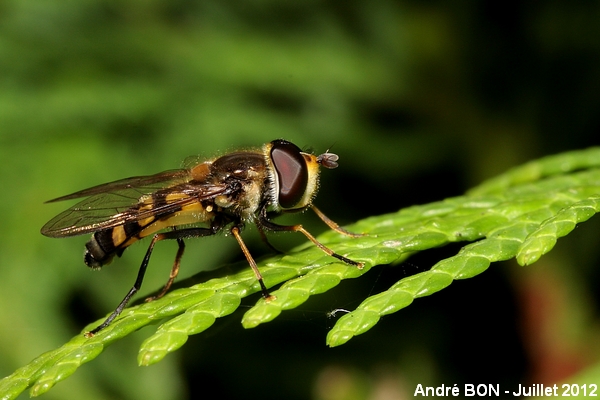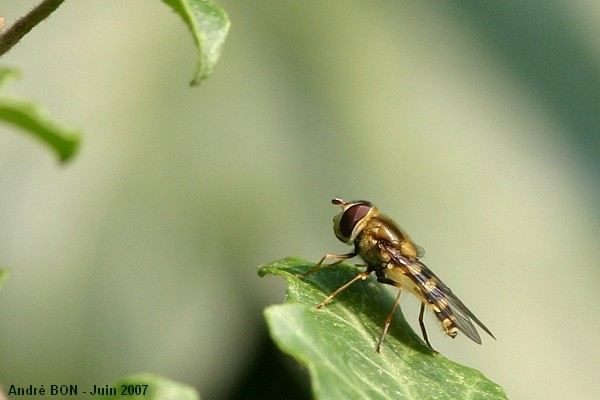



| Syrphus vitripennis (Meigen, 1822) |




|
|
Scientific name: Syrphus vitripennis (Meigen, 1822) Common name: French name: Order: Diptera Family: Syrphidae Wingspan : 6-14 mm Biotope: Gardens, hedgerows and woodland edges. Geographic area: Europe, Asia, North America. Observation period : March to November. |
The hoverflies of the Syrphus genus have a matt golden bronze thorax. The scutellum varies from yellow to brown yellow. The abdomen of Syrphus vitripennis is black and crossed by three yellow stripes. The first one is interrupted, the two following ones have a rounded hind edge. The eyes are hairless. Males' ones are touching while females' ones are separated by a gap. The hind femora are mostly black. Syrphus torvus shows hairy eyes, especially on males. Syrphus ribesii also shows hairless eyes like Syrphus vitripennis. You can tell females apart with their hind femora being completely yellow. This is much more difficult for males. Male Syrphus ribesii shows black hairs on the yellow part of the hind femora, this is not the case for Syrphus vitripennis There are several broods per year. The larvae feed on aphids. Syrphus vitripennis over winters as a larva. |
| [To know more about the Syrphus vitripennis] [Next picture] [Top] |

|
The touching eyes indicate one male. |
| [To know more about the Syrphus vitripennis] [Next picture] [Previous picture] [Top] |

|
The yellow part of the hind femora is very reduced and we cannot see any black hair. So I think that this confirms this one as one male Syrphus vitripennis. |
| [To know more about the Syrphus vitripennis] [Next picture] [Previous picture] [Top] |

|
The hind femora with a large black part and the hairless and separated eyes indicate one female Syrphus vitripennis. |
| [To know more about the Syrphus vitripennis] [Previous picture] [Top] |

|
The guide "Insectes de France et d'Europe Occidentale" by Michael Chinery only displays the Syrphus ribesii species in this genus. This explains my first identification error. The hind femora with a large black part and the hairless and separated eyes also indicate one female Syrphus vitripennis here. |